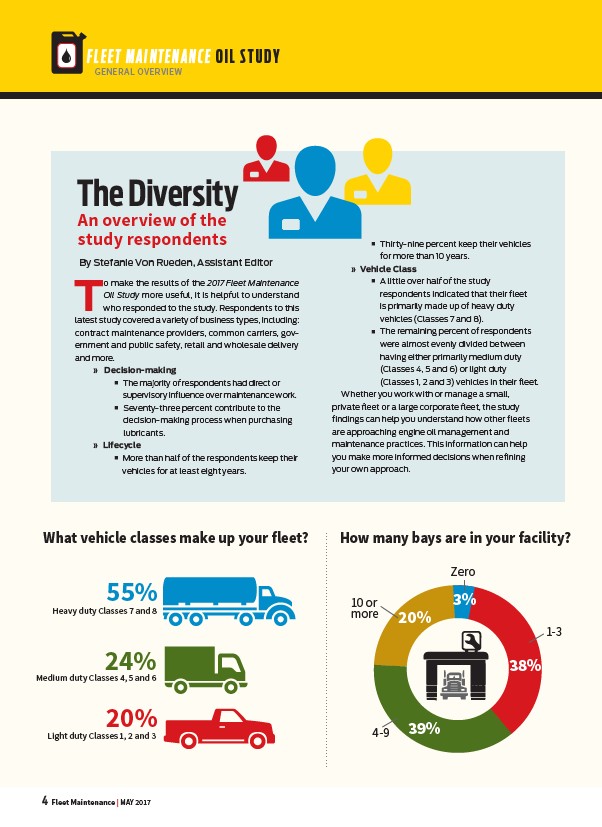
FLEET MAINTENANCE O IL STUDY
The Diversity
An overview of the
study respondents
By Stefanie Von Rueden, Assistant Editor
To make the results of the 2017 Fleet Maintenance
Oil Study more useful, it is helpful to understand
who responded to the study. Respondents to this
latest study covered a variety of business types, including:
contract maintenance providers, common carriers, government
and public safety, retail and wholesale delivery
and more.
» Decision-making
• The majority of respondents had direct or
supervisory influence over maintenance work. • Seventy-three percent contribute to the
decision-making process when purchasing
lubricants.
» Lifecycle • More than half of the respondents keep their
vehicles for at least eight years.
4 Fleet Maintenance | MAY 2017
Oil Study Header
How many bays are in your facility?
Zero
1-3
38%
20%
39%
3%
10 or
more
4-9
What vehicle classes make up your fleet?
55% Heavy duty Classes 7 and 8
24% Medium duty Classes 4, 5 and 6
20% Light duty Classes 1, 2 and 3
• Thirty-nine percent keep their vehicles
for more than 10 years.
» Vehicle Class • A little over half of the study
respondents indicated that their fleet
is primarily made up of heavy duty
vehicles (Classes 7 and 8). • The remaining percent of respondents
were almost evenly divided between
having either primarily medium duty
(Classes 4, 5 and 6) or light duty
(Classes 1, 2 and 3) vehicles in their fleet.
Whether you work with or manage a small,
private fleet or a large corporate fleet, the study
findings can help you understand how other fleets
are approaching engine oil management and
maintenance practices. This information can help
you make more informed decisions when refining
your own approach.
GENERAL OVERVIEW